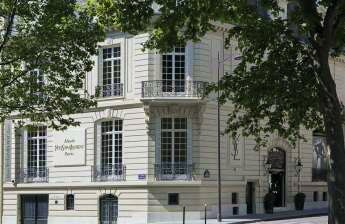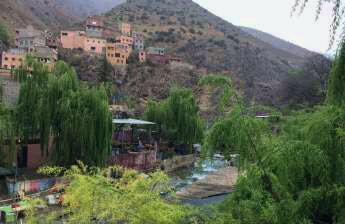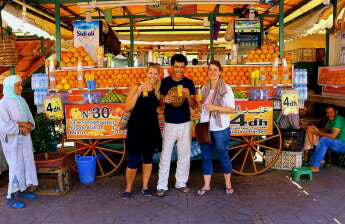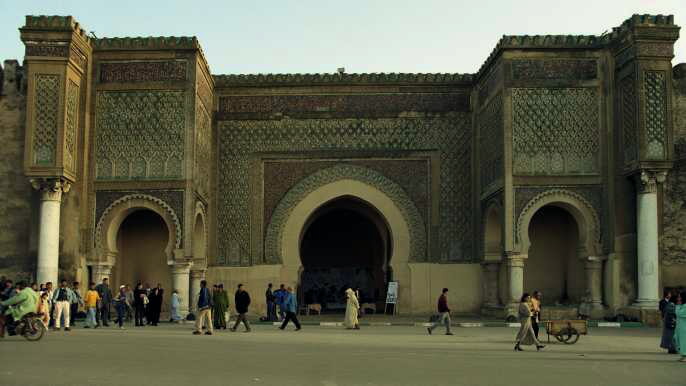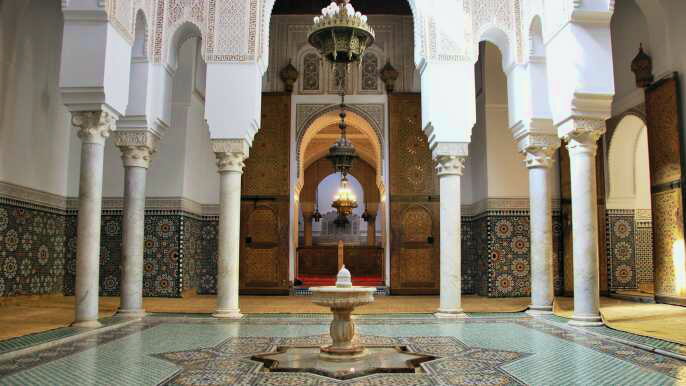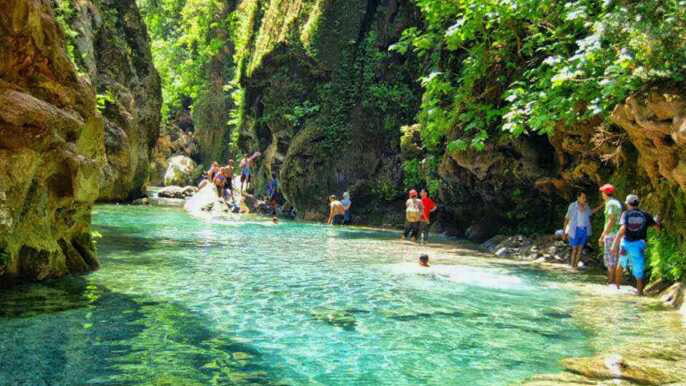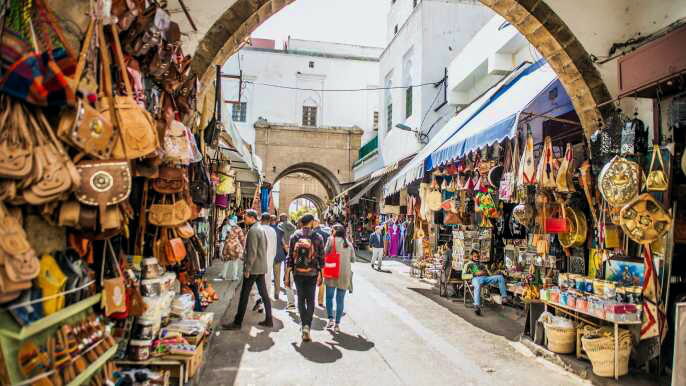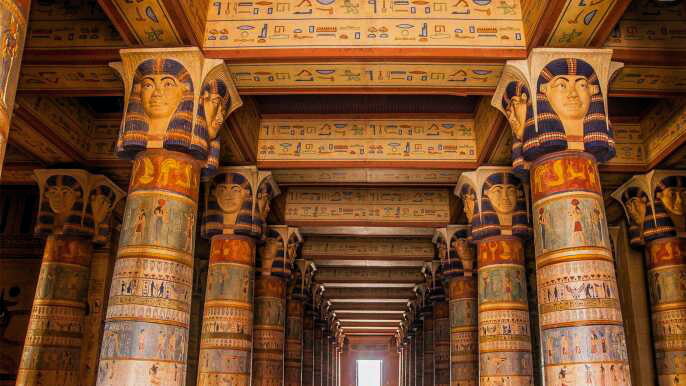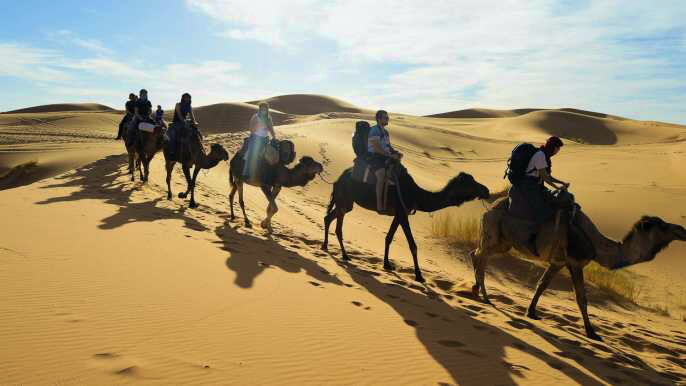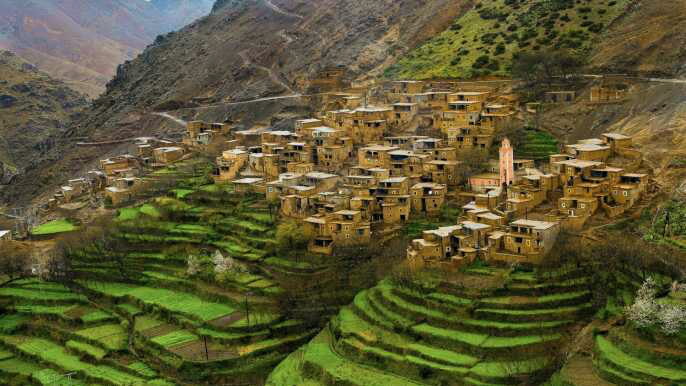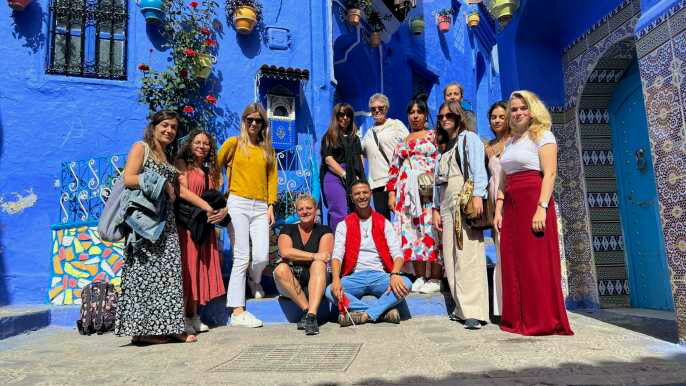The ancient city of Marrakech is a must-visit for anyone visiting Morocco. The vibrant markets, mosques, and monuments are just a small part of what makes it a unique and magical place.
If you’re looking to experience the real Marrakech, you should definitely consider booking a stay in one of its atmospheric riads. They’re a wonderful way to get immersed in the local culture, and you can even learn some Arabic!
1. Medersa Ben Youssef
One of the most striking architectural gems in Marrakech, this 16th-century former boarding school was once an education centre that specialized in religious learning. It taught theology, Koranic law, Arabic language and literature, astronomy, and maths.
It’s also a stunning example of Arab-Andalusian architecture, with an expansive courtyard containing a central pool, wide columned arcades, and dormitory quarters above. The walls are adorned with horseshoe archways, stucco arches, and carved cedar windows.
To visit the Ben Youssef Medersa, find your way down a lane off Place Ben Youssef and make your way towards its entrance. Once inside, you’ll be greeted by an exquisite entryway that reads “You who enter my door, may your highest hopes be exceeded.”
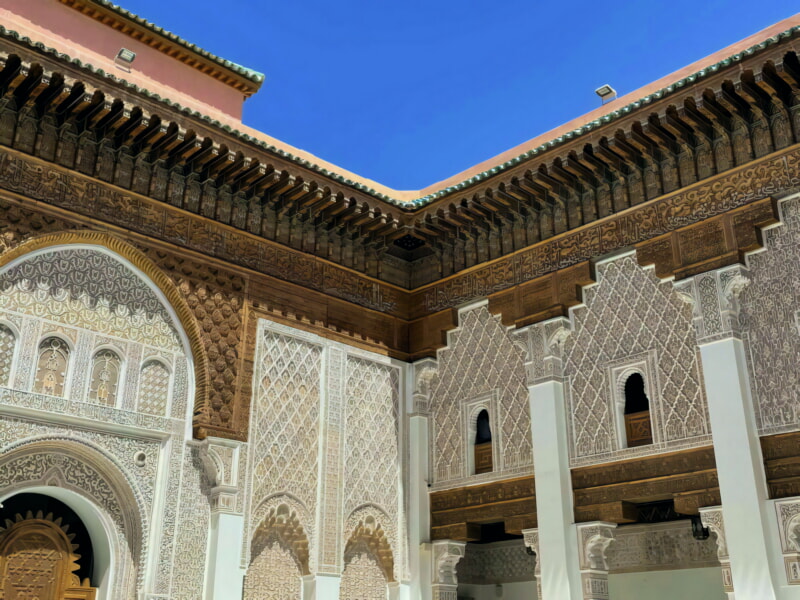
2. Koutoubia Mosque
Marrakech’s most prominent landmark, the Koutoubia Mosque, is a must-see attraction. Its 77-metre-high minaret is an iconic symbol of the city and can be seen from almost everywhere in town.
This 12th-century mosque was constructed under the reign of Yacoub el-Mansur, an Almohad caliph who ruled between 1184 and 1199. During its construction, the Koutoubia Mosque served as a model for several other notable mosques in Morocco and Seville, Spain.
As well as serving as a historic site, the mosque is also home to a lovely garden with palm trees and oranges. A short stroll around the Koutoubia Mosque grounds will reward you with some of the most picturesque views in Marrakech.
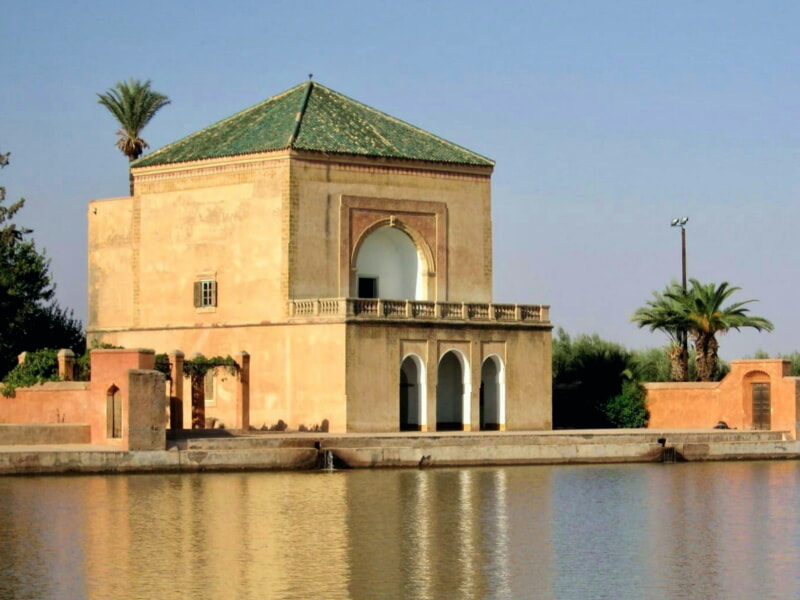
3. Bahia Palace
Built in the late 19th century, Bahia Palace is one of Marrakech’s most stunning sights. The complex extends over eight hectares, and its rooms and courtyards dazzle with intricate tile work, mosaics, colored glass and fine carvings.
The regal palace was initially commissioned by Si Moussa, a former slave who rose through the ranks to become Sultan Hassan I’s chamberlain and later grand vizier. It was enlarged and embellished by Vizier Abu ’Bou’ Ahmed, who housed his 24 concubines and four wives here.
The harem is divided into three courtyards, which are surrounded by riads that have been carved out of stone and wood, adorned with carved lintels, zouak artistry and stained-glass detailing. This palace is often called the first building in North Africa to incorporate stained glass as a decorative element.
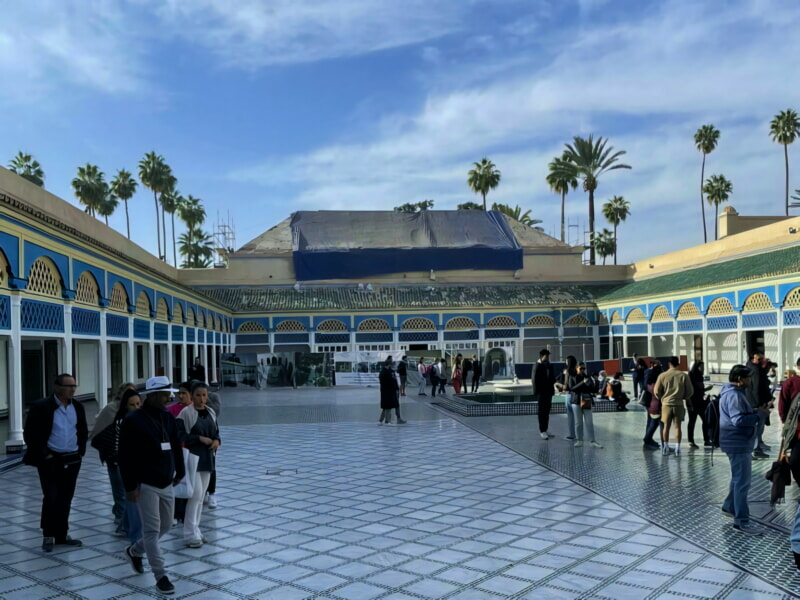
4. Jemaa el-Fnaa
Located in the heart of Marrakech’s medina, Jemaa el-Fnaa is the main market square and a place of bustling cultural activity. Here, medieval and modern mix comfortably on a daily basis to play host to an alluring sensory spectacle.
A visit to this lively marketplace is a must for all cultural travelers visiting Marrakech. From stalls selling orange juice to snake charmers and fortune tellers, there is a wealth of sights and activities here.
Arrive before sunset and park yourself at one of the many rooftop cafes with terraces overlooking the square to watch the hawkers set up for their nighttime shows. It’s a fantastic way to immerse yourself in Moroccan culture and to get an idea of what it’s like to be a local here.
5. Tizi n’Tichka
Tizi n’Tichka is one of the most famous roads in Morocco. It is a winding road with switchbacks that takes you to the summit of the High Atlas Mountains and back down again.
Those who are prone to motion sickness should avoid this route, as hairpin turns and curves can be a bit nerve-racking. However, it’s also a wonderful road trip for those looking to see some of the sights that Morocco has to offer.
This tour starts with a pickup from your hotel in Marrakech and then heads into the High Atlas Mountains for a day of exploring. Enjoy views of the mountains from the Tizi n’Tichka pass and stop at a Berber fortified village, Ait Benhaddou Kasbah. You’ll have plenty of time to take photos and stretch your legs along the way.
